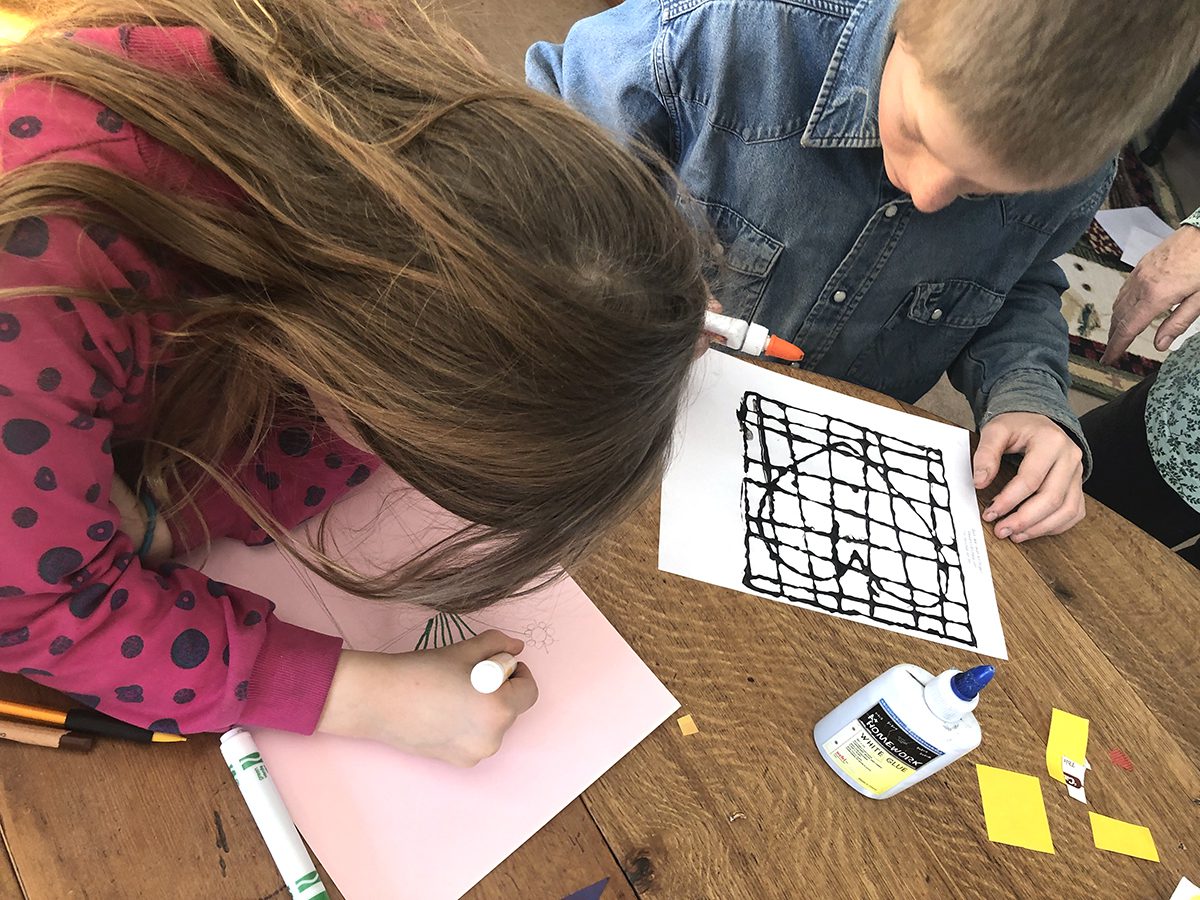The following article is written by an art educator. We recognize that art teachers are not licensed therapists or counselors. If you are experiencing concerns about trauma, violence, and mental health in your classroom, please seek assistance from professional school counselors, and adhere to your school and district policies.
Picture this—students are throwing pencils, scissors, chairs, and anything they can turn into a projectile. Students are screaming, fighting, crying, and running out of class. Maybe this is your classroom, or maybe it’s just the stuff of nightmares you have heard. Either way, a disorderly classroom like this is not the goal.
The ideal art room is a safe place for all students to imagine, explore, play, and create. Yet there are so many things that happen to you, your students, and your building that shape attitudes, emotions, and perspectives before students even walk through your door. Restorative justice can offer art teachers a community-oriented way to handle these tough conversations without sacrificing students’ time to create!
Let’s dig into what restorative justice is, what the two types of restorative circles are, and some easy ways to implement these strategies in your art room.
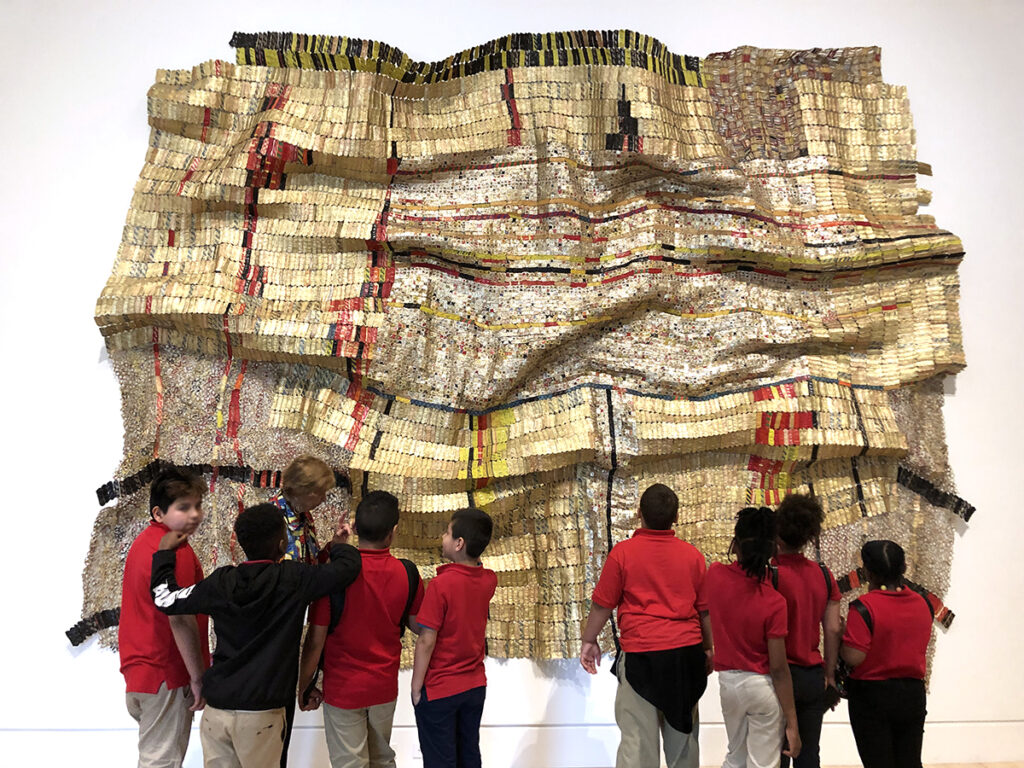
What is restorative justice?
Restorative justice is an evidence-based process that approaches conflict by focusing on injured relationships and working to repair them. It is gaining traction in classrooms because of its trauma-based alignment and focus on student dignity.
Restorative justice started as a way to reframe criminal acts as relational violations instead of simply breaking a rule. Many education systems adopted restorative justice strategies to help communities heal from conflict and harm. Understanding how actions affect the relationships in a group is crucial to lasting, peaceful conflict resolution.
Restorative justice borrows a page from trauma-informed discipline. It sees behaviors as symptoms of a root cause. Once an understanding of the situation emerges, relational reparation and rebuilding can start.
Proactive relationship building can help prevent disputes and the strategy of restorative circles can help resolve disputes. Restorative circles allow involved parties to come together to address conflict and agree upon a plan to repair the harm. The circles follow a format for participation and are moderated by a trained facilitator. Relationships lay the foundation of authentic care. Restorative circles help students understand their actions can affect and hurt those relationships. If you are interested in becoming a trained facilitator, reach out to your administration team to see if there are avenues through your district or school.
If you are looking for more ways to build relationships in your classroom, these resources may be helpful:
- 9 Strategies to Build Rapport With Your Students From the Start
- 5 Ways to Build Relationships With At-Risk Students
- Connecting With Secondary Students Pack in PRO Learning
- The Art of SEL, Episode 5: Relationship Skills
- Use a Wall of Fame to Build Rapport With Your Students!
What are the two types of restorative circles, and what can they look like in the art room?
Restorative circles can reduce negative, punitive discipline measures by creating a positive school climate. According to Jamie Silverman and Molly Mee’s article, circles fall into two categories.
The two categories are:
- Proactive
- Responsive
Proactive circles build community and establish positive connections. Responsive circles offer the chance to rebuild damaged relationships. Let’s take a closer look at each type of circle and what they can look like in the art room.
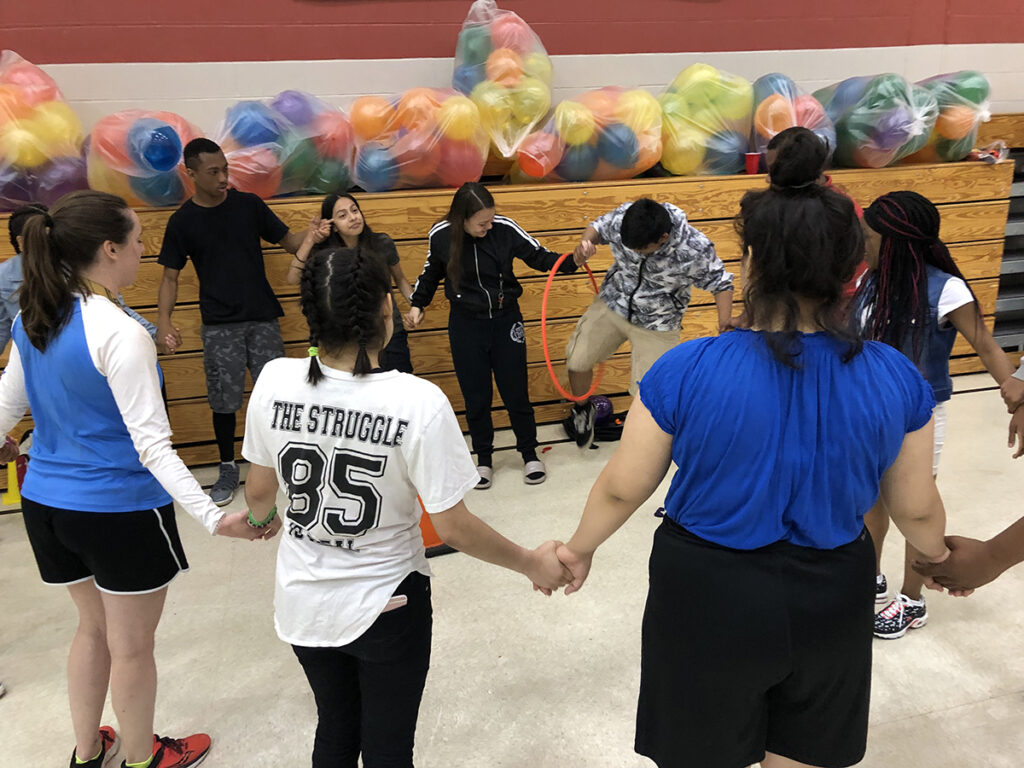
1. Proactive circles are “morning-meeting” style gatherings to build community.
Fun questions and games build rapport and help prevent conflict. The goal is to increase respect and understanding for each student. These circles usually involve open-ended questions that allow each student a “spotlight” moment to share. Watch this video to see how it’s done!
Remember, only trained facilitators can run true restorative circles. However, many elements used in restorative circles can yield positive results in your studio. Adapt this practice and try out these timely proactive circle components in your art class:
- Come up with a signature opening ritual.
Stand at the door to greet students with a personalized welcome. Lead your artists in a call and response or mantra from the same corner of the room every day. - Incorporate visual check-ins.
Have students point to an emoji to represent how they are doing as they walk in. Chat with your students as they illustrate their feelings in a visual journal. Prompt them with introspective questions. - Close with a game or a thank you.
Take advantage of the time students spend lined up at your door to play a quick, fun game. Have students rate how they feel they did in class. You can even circle back to the emoji check-in they completed when they walked in. Don’t forget to thank them for creating with you!
2. Responsive circles are for conflict resolution and relationship reparation.
A disruption can breach the trusted relationships in the class. The offended student(s) voice their side before devising a solution for restoration with all students involved or affected. Watch this video to see a responsive circle in action!
Adapt this practice and keep these restorative circle strategies in mind when resolving conflict:
- Address feelings with “I” statements.
There are often a lot of hurt feelings involved in a conflict. Encourage “I” statements such as, “I felt… when you…” This expresses how the situation affected each individual and reduces blame. - Listen to all sides of the story.
There are two (or more) sides to every story. Give everyone an equal chance to tell their version of events. You may learn something you didn’t know. - Recognize when you need support.
You have limited time and resources to deal with conflicts in class. The disputes that come up can be part of bigger issues. Don’t be afraid to tap into your network of support. Bring in professional counselors and administration when conflicts are out of your immediate classroom scope.
What are some easy ways to try out restorative justice circle strategies in the art room?
Reading this, you may think, “Restorative justice sounds all well and good, but who has the time for so many circles?!” Remember, restorative justice is a communal discipline model. Ideally, you aren’t in it alone. Hopefully, your building or district buys into the benefits of this approach and supports you as you practice it.
If this is not the case, all is not lost. There are still ways to use restorative justice to set students up for success when dealing with disputes. The best part is it doesn’t have to come at the expense of their artmaking and studio time!
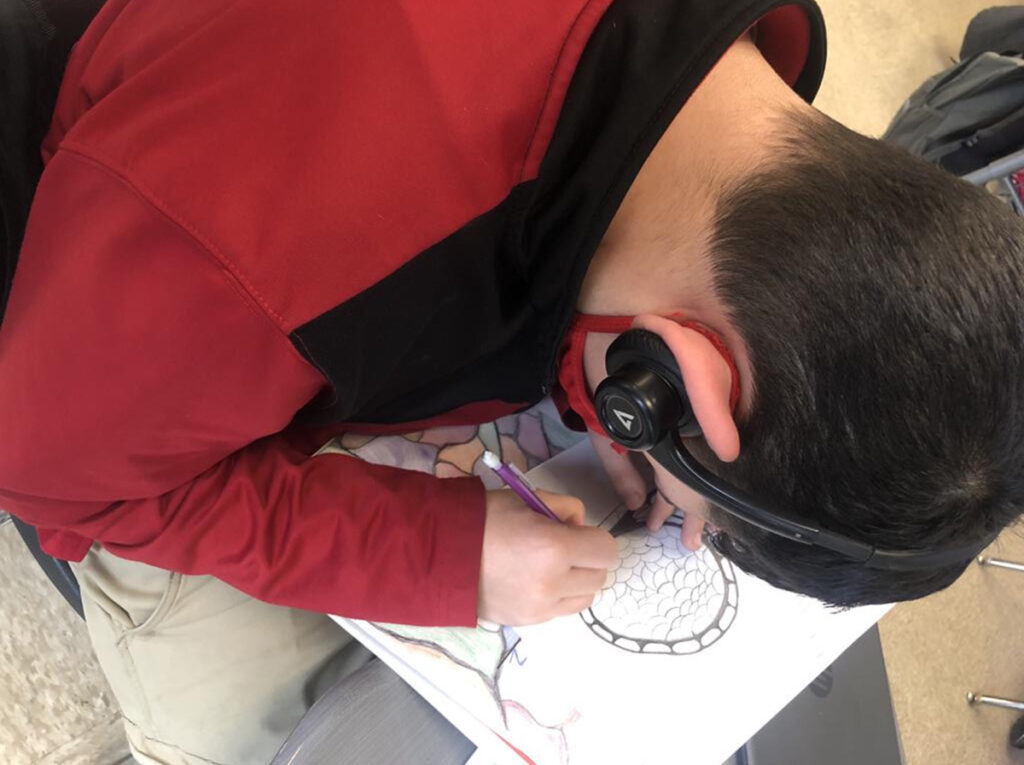
Try adding these easy restorative, justice-based art activities into your toolkit:
- Cool down with doodles.
Remove students from the conflict area and let them draw Zentagle patterns. They can also do mindful coloring while they cool down. This gives students time to breathe so they can discuss the conflict more rationally. - Share their side through a comic strip.
Conflict often arises from miscommunications or misunderstandings. Students create a comic strip of events leading up to a dispute. Prompt them to show how specific actions affected them. - Express feelings in clay.
The soothing texture of clay and the hands-on aspect of working with it can provide a sensory distraction for distraught students. Students construct a sculpture to represent what they are feeling in the moment. - Uplift with word art.
Words are powerful. They can lift others up or tear others down in an instant. Students paint a positive word or message for their community. Hang what they create on the wall for personalized and uplifting decor as well as a visual reminder for all. - Draw a class love letter.
Art often fills the space words cannot. Students draw what their class means to them. This can offer them a chance to repair ties to the peers they caused harm.
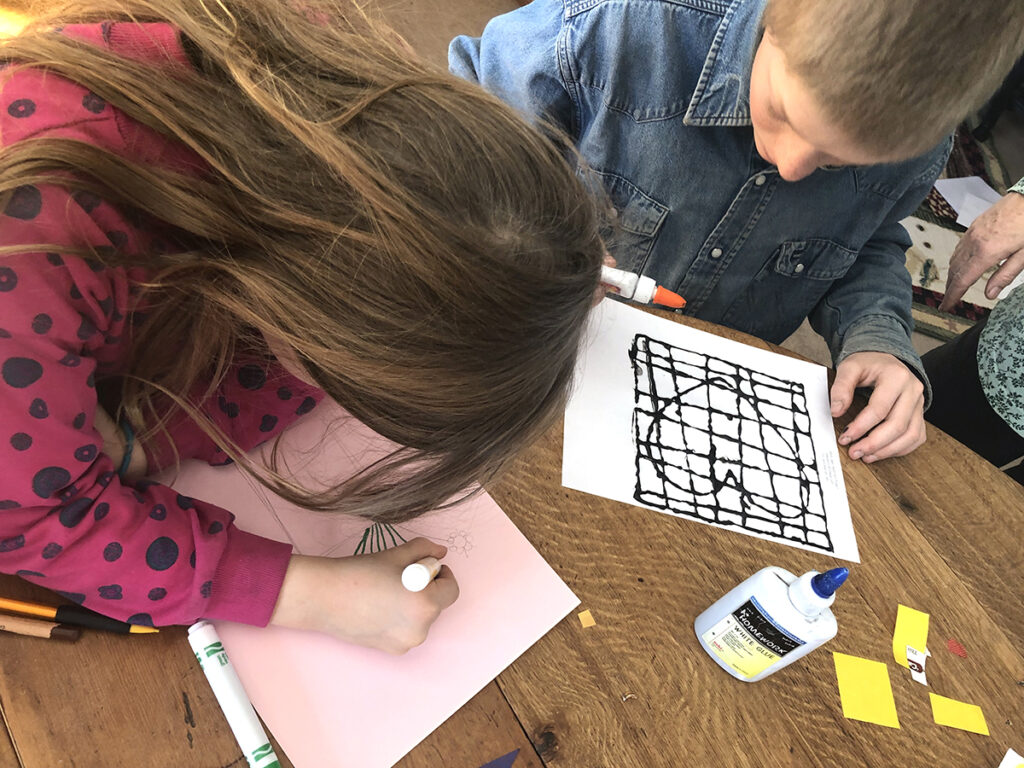
You may not have time to host a full-on restorative circle in the middle of art class. However, these small, creative opportunities can help students who are experiencing strife. The activities allow students to express their emotions and prepare them to step back into the learning community to make amazing art!
Remember, restorative justice is all about building and maintaining healthy relationships. You can cultivate these with a few small activities in your existing routines. Start an opening class ritual, listen to every student involved in a conflict, or set up a space for students to cool down while making art. These simple things can go a long way in making students and teachers feel safe and connected in the art room.
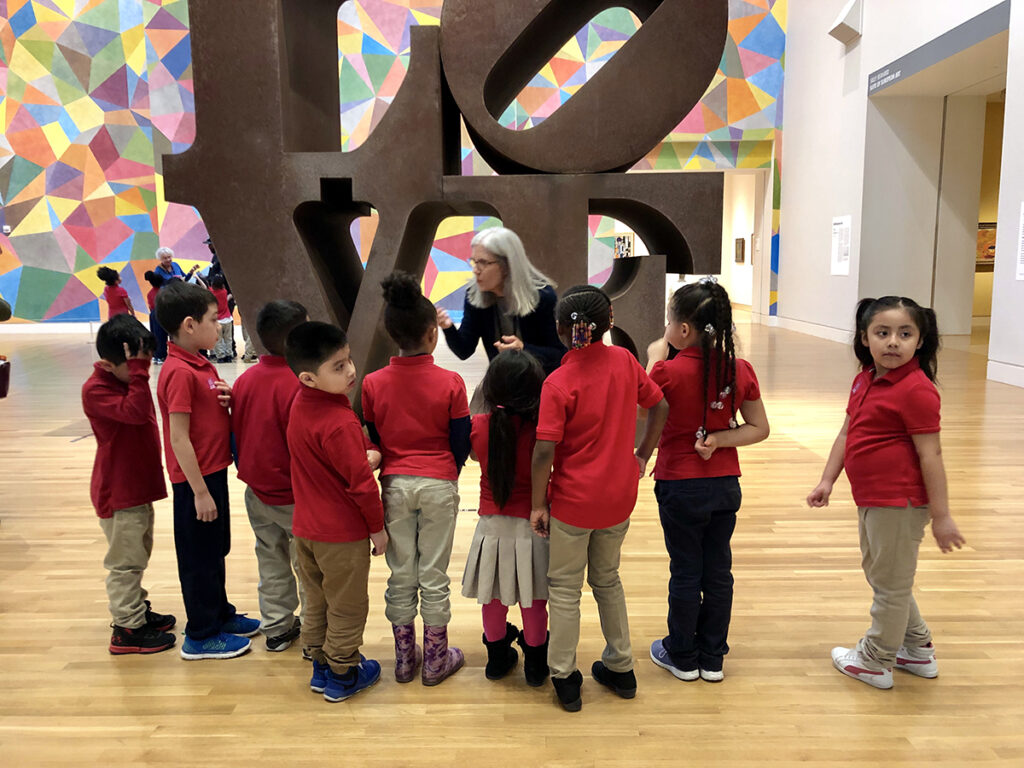
Learn more about bringing restorative justice and other restorative practices to your classroom with these resources:
- The International Institute for Restorative Practices (IIRP)’s Defining Restorative guide overviews restorative practices and looks at a variety of its processes.
- Read Building Community With Restorative Circles for more tips about proactive circles.
- 50 Circle Time Questions and Games can be adapted into visual prompts or games at the end of class.
What questions do you still have about restorative justice?
Which restorative strategy will you try?
How else have you put restorative justice into practice in your art room?
Magazine articles and podcasts are opinions of professional education contributors and do not necessarily represent the position of the Art of Education University (AOEU) or its academic offerings. Contributors use terms in the way they are most often talked about in the scope of their educational experiences.
